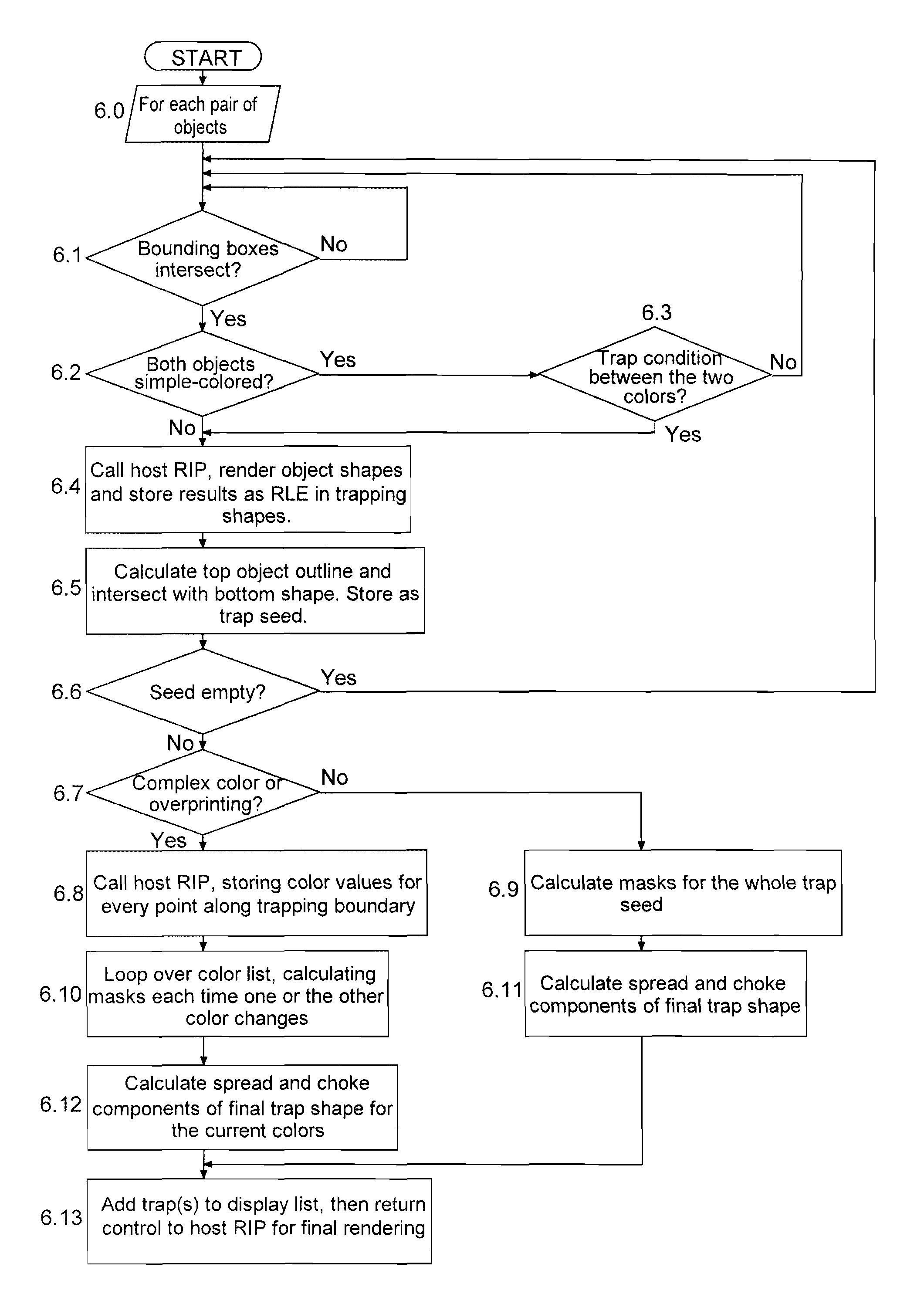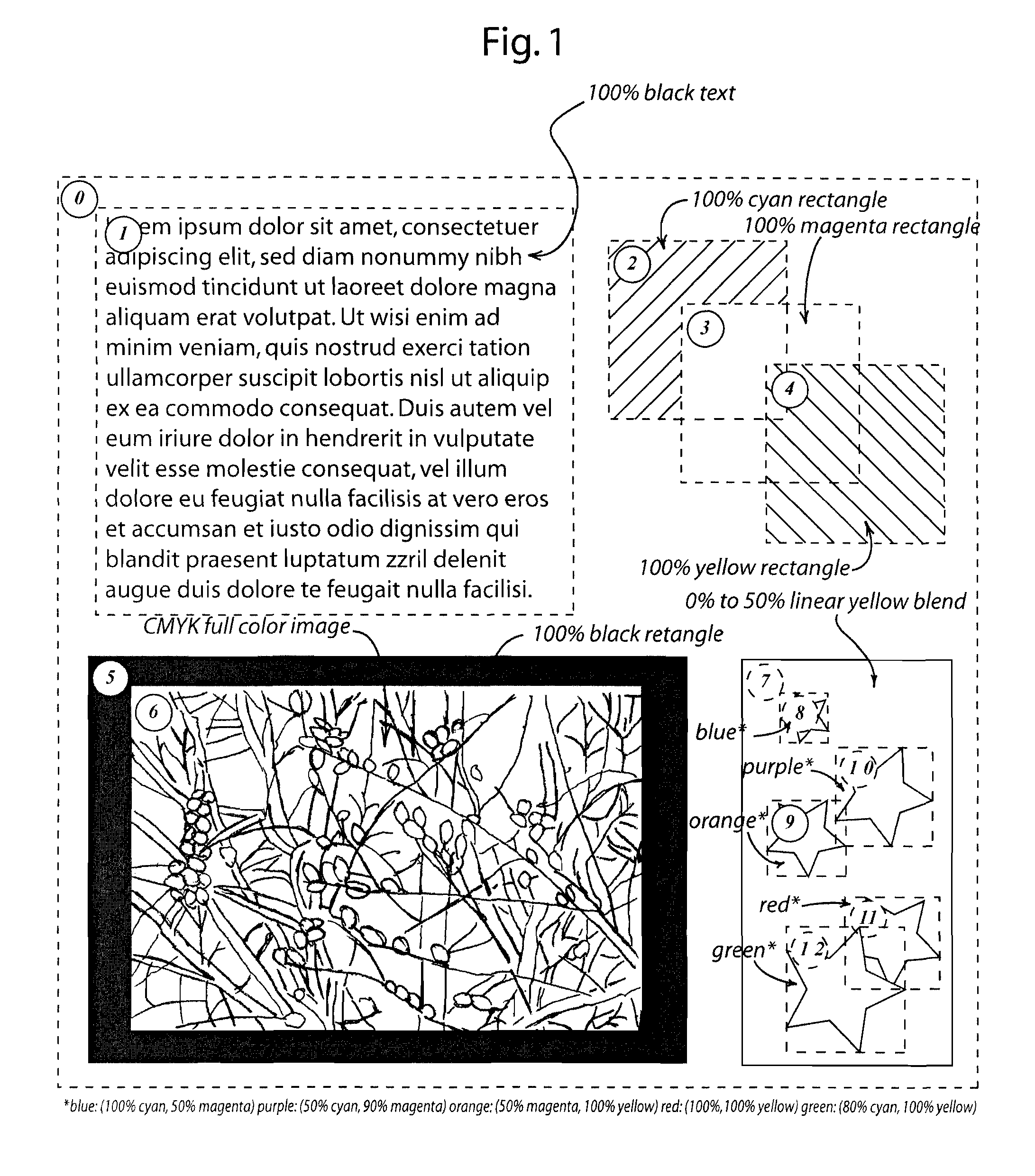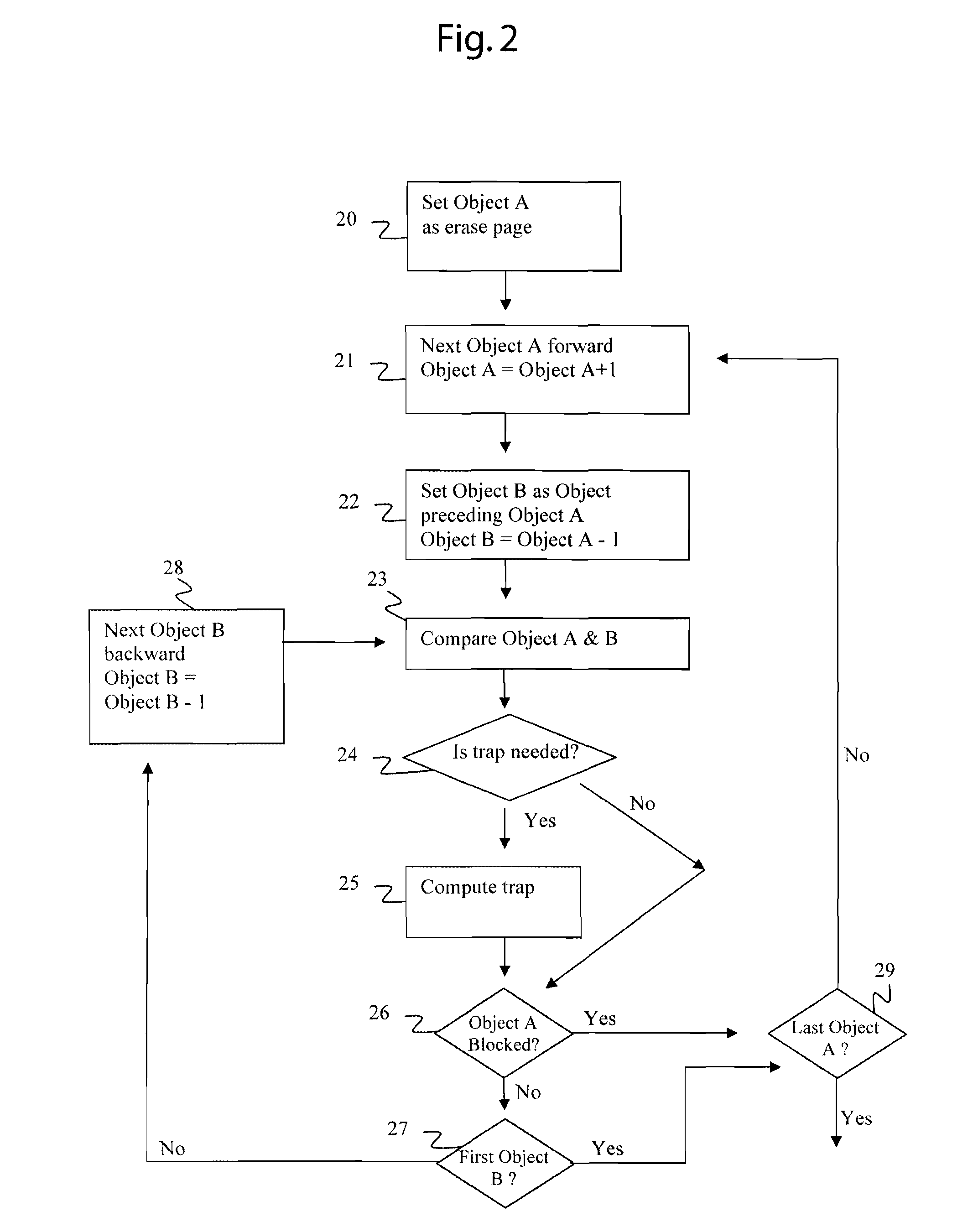Object-based raster trapping
a raster trapping and object technology, applied in the field of computer graphics, can solve the problems of large computation costs, inconvenient use, and many designers who do not like the visual impact of trapping their designs
- Summary
- Abstract
- Description
- Claims
- Application Information
AI Technical Summary
Benefits of technology
Problems solved by technology
Method used
Image
Examples
Embodiment Construction
[0019]In the preferred embodiment of the invention, a trapping engine uses simple bounding boxes, colors, and temporal order information, to eliminate the possibility of trapping many pairs of objects without ever having to calculate their exact shapes. By considering the temporal order of the objects in a page, such a z-order display list, the trapping engine can quickly reject the possibility of trapping in areas where it is not necessary. Once a pair of objects that may need trapping has been identified, the rasterizer of the host Raster Image Processor (RIP) is used to calculate the pixels (and pixel values) for these objects. The rendition of pixels, which may be in various forms such as RLE shapes, is then processed by the engine to generate the ideal trap shape.
[0020]The trapping engine has the advantage of being easy to integrate into an existing RIP implementation, since it uses much of the functionality which a RIP must already necessarily provide in order to rasterize a p...
PUM
 Login to View More
Login to View More Abstract
Description
Claims
Application Information
 Login to View More
Login to View More - R&D
- Intellectual Property
- Life Sciences
- Materials
- Tech Scout
- Unparalleled Data Quality
- Higher Quality Content
- 60% Fewer Hallucinations
Browse by: Latest US Patents, China's latest patents, Technical Efficacy Thesaurus, Application Domain, Technology Topic, Popular Technical Reports.
© 2025 PatSnap. All rights reserved.Legal|Privacy policy|Modern Slavery Act Transparency Statement|Sitemap|About US| Contact US: help@patsnap.com



